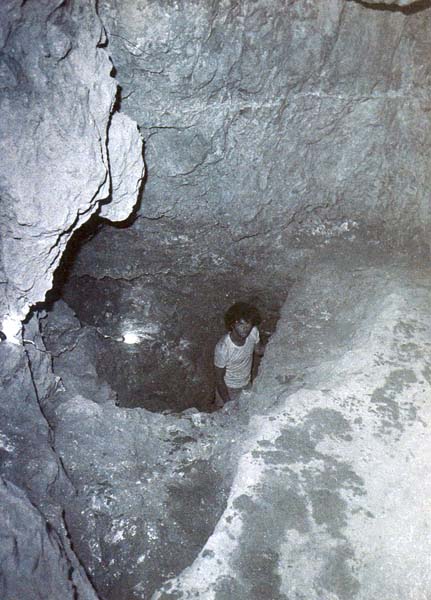Image Details

Courtesy Yigal Shiloh/City of David Archaeological Project
Joab’s route? When David attacked Jebus (Jerusalem), he declared, “Whoever shall smite the Jebusites first shall be chief and commander” (1 Chronicles 11:6). Joab won the honors, initiating the attack by climbing the tsinnor, a disputed word thought to mean watershaft or water channel. Scholars have suggested that Warren’s Shaft was what Joab climbed to enter the Jebusite city, a hypothesis now supported by its identification as a sinkhole (a shaft eroded by water in this case). Alternatively, Joab may have climbed through the blocked exit.
The irregular shape and rough sides of the 37-foot-deep shaft—typical for a sinkhole—appear clearly in this photograph and in the section drawing (see drawing). A test revealed no carbon-14 in the calcareous limestone of the shaft’s walls, meaning that the shaft is more than 40,000 years old (the time required for all of the carbon-14 to change into ordinary carbon). This dating confirms that the shaft is an ancient sinkhole, not a man-made shaft, and that it formed long before the time of David in about 1000 B.C.E.
